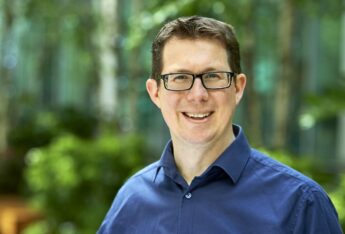Downforce Technologies, a global digital measurement, reporting and verification startup in soil organic carbon measurement and prediction, has closed a $4.2m funding round led by Equator VC.

Downforce Technologies, a digital measurement, reporting and verification startup focused on soil organic carbon (SOC) measurement and prediction, has raised $4.2m (€3.9m) in a funding round led by Equator VC.
Impact Investor spoke to Geoff Horrell, chief product officer for Downforce, who explained that Equator VC, which targets technology-enabled, early-stage ventures in energy, agriculture and mobility in support of the climate transition in sub-Saharan Africa, contributed around half of the investment with the remaining capital raised from individual investors who could not be named.
Existing investors in Downforce include Tiverton Agriculture Impact Fund, Dragonfly Enviro Capital, Perivoli Innovations, and the Clean Energy Finance Corporation (CEFC), an Australian Government-owned green bank whose investment is managed by Virescent Ventures.
Downforce said its natural capital analytics technology use science, modelling and remote sensing to provide a more reliable, impartial, and cost-effective digital method for SOC measurement than in-field tools.

The company said the data generated by the technology would allow farmers, landowners, and corporations to track progress towards sustainability goals, unlock new revenue streams, and support climate action.
“Many farms and brands in the food and agricultural sector have either existing regenerative practices and biodiversity programmes or ones they want to implement to meet sustainability targets. Our technology provides the data that allows them to prove the outcome of those things and see the improvement in soil health over time,” said Horrell.
Downforce, which is currently active in the UK, Australia, the US and Kenya said it would use the investment for international expansion throughout Africa and North America as well as for further product development, including building more land management planning tools and emissions reporting capabilities.
Soil organic carbon
SOC refers to the carbon component of soil organic matter, which is essentially, an indicator of healthy soil. Agricultural practices that retain and increase the amount of SOC, also improve productivity and sequester atmospheric carbon.
“Soil health is also about water retention, resilience against drought and flood and biodiversity. Half of the world’s biodiversity lives in the soil, so improving soil is improving biodiversity,” said Horrell.
Horrell explained that as well as measuring soil health, the technology enabled farmers to measure, monitor and report on their carbon emissions and the carbon sequestered in their soil and tap into financial incentives from brands committed to reducing their Scope 3 emissions.
“Brands could also buy carbon units for insetting. This can come in the form of formal carbon units which financially reward the farms in their supply chain that go beyond net zero in reducing emissions and improving their sequestration.”
In addition to providing historical and current soil organic carbon assessments on agricultural land, Downforce also provides tools for planning and executing verified carbon projects; soil health interventions; and farm emissions data integration enabling net-zero emissions reporting.
Dealing with uncertainty
Downforce said that in addition to a global lack of financing for nature-based solutions to help meet the world’s climate, biodiversity, and land degradation goals, food producers who were reliant on global supply chains, particularly in Africa, for inputs, faced both uncertainty and regulatory pressures.
“Companies are increasingly under pressure to reduce the emissions in their supply chains and they’re pushing that pressure down to the food producers and growers. The question remains, how do those at the bottom of the supply chains get funded and compensated for taking on the risk of switching from conventional farming to regenerative farming?” said Horrell. “There is a huge funding gap in the training and investments needed to allow them to do that.”
Horrell also gave the example of Article 6 of the UN’s Paris Agreement, which deals with voluntary carbon markets, where he said there was still a lot of uncertainty around the rules concerning soil carbon removal projects and their inclusion in national-level accounts and targets.
“We’re looking for that to be clarified and have a much better, more rounded carbon market to increase funding for soil carbon projects,” he said. “A lot of finance is currently going into woodland and forest carbon, which is great but it doesn’t help with the issue of food insecurity. When you invest in sustainable agriculture, you’re helping livelihoods, food security and if you do it right, you can also help the planet too.”






